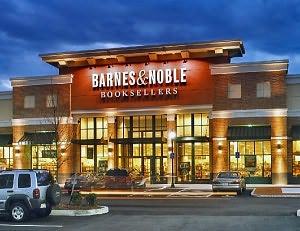By Adam Blair, Executive Editor

As a long-time lover of bookstores large and small, I’m always alarmed at news stories predicting the seemingly imminent demise of national bookstore chains like Barnes & Noble. (My concern has nothing, I repeat nothing, to do with the fact that I was just charged my annual fee of $25 for membership in their loyalty program.)
I know the threats to the health of brick-and-mortar bookstores are real; I covered the death-by-a-thousand-cuts demise of the Borders chain a few years ago. Everyone in retail is keenly aware of the competitive power Amazon wields, particularly for items that might have been designed for a pure-play e-Commerce retailer: Barnes & Noble’s staples of books, music and movies.
That’s why I was actually cheered to hear that B&N’s new CEO Ron Boire sees the chain’s future success involving more than just books. According to a recent New York Times article, Boire is “leading a push to rebrand Barnes & Noble as more than just a bookstore by expanding its offerings of toys, games, gadgets and other gifts and reshaping the nation’s largest bookstore chain into a ‘lifestyle brand.’”
As a retailing strategy, this may seem counterintuitive and/or desperate. After all, there are lots of other retailers offering these same product categories, and they have advantages in supplier relationships and merchandising expertise that Barnes & Noble will need to quickly get up to speed on. There’s also a very real risk that B&N’s core strength as a bookseller could be diluted as its inventory diversifies.
But in many ways Boire’s plans play to B&N’s strengths, in ways that the retailer’s ill-fated embrace of the Nook e-book reader did not. B&N, and physical bookstores in general, will never be able to beat Amazon on its digital world “turf.” In any case, the fad for e-books may be fading; their sales were down 11% for the first seven months of this year, while paperback sales rose 13% during the same period, according to the Association of American Publishers.
B&N also will never be able to match the individualized attention and merchandise curation that the best-run independent bookstores provide (though it should certainly make every effort to use technology and staff expertise to try). What its stores can offer, in contrast to the independents, are the space, facilities and resources to become shared public spaces.
Boire wants to emphasize participatory products, such as coloring books for adults, and events like technological literacy workshops that explain coding and 3D printing. He’s looking to build on a bright spot in B&N’s financial results, strong sales for the small but growing toys and games categories.
These strategies align with the hunger for community, contact and real-world participation in today’s culture, a reaction to the isolating, screen-centric behaviors that dominate modern life. They also turn what has traditionally been seen as a drag on B&N’s financial profile — its heavy real estate footprint — into a positive.
The more the retailer can turn itself into a real-world meeting place, rather than simply a box containing books, the better its prospects will be. Reading may be a very private activity, but even dedicated readers don’t always want to be alone.






